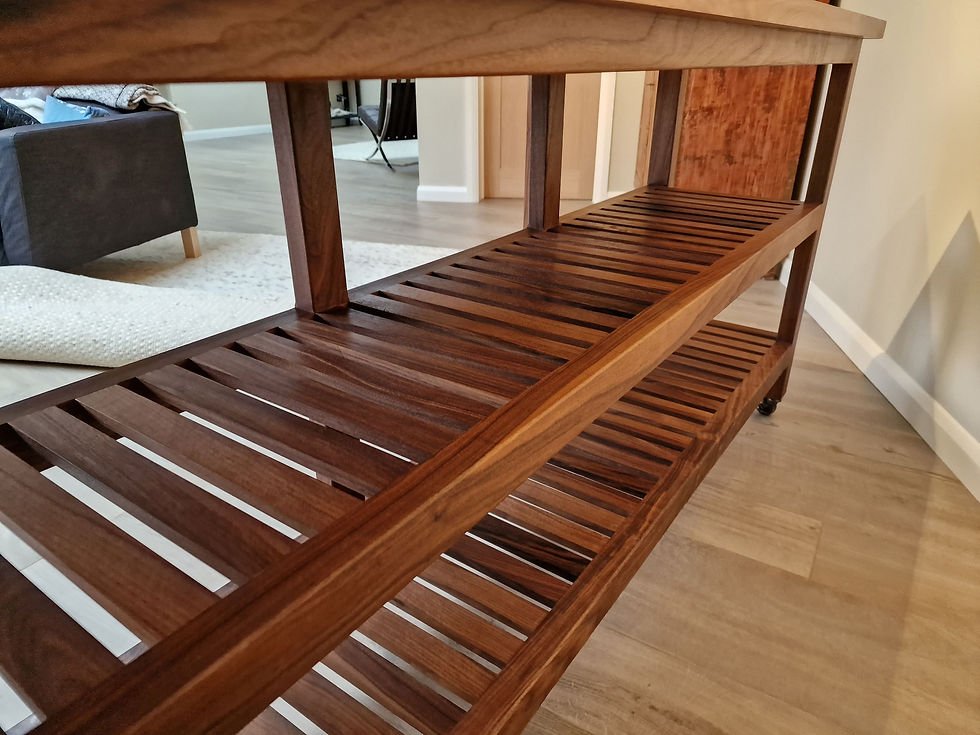When is Timber Ready to Work into Fine Furniture?
- Rich Moss

- Dec 8, 2023
- 2 min read
Introduction: Timber, the Soul of Fine Furniture
Timber is more than just raw material—it's the soul of fine furniture. But when is it truly ready to be transformed into a piece of fine furniture ? Let's have a look at the practicalities of timber preparation, from selecting the right wood to assessing its readiness for the workshop.

Choosing the Right Timber: Quality Matters
Before you even think about firing up the saw, you need to choose the right timber for the job. Quality timber is the foundation of fine furniture, so look for hardwoods like oak, walnut, or cherry that offer both beauty and durability. Keep an eye out for straight grain, minimal knots, and consistent colour to ensure a flawless finish.
Seasoning: Patience is a Virtue
Once you've selected your timber, it's time to let nature work its magic. Seasoning is the process of allowing timber to acclimate to its environment, reducing moisture content and stabilizing its dimensions. This isn't a step you can rush—seasoning can take anywhere from several months to a few years, depending on the species and thickness of the wood.
Assessing Moisture Content: The Key to Success
Moisture content is crucial when it comes to working with timber. Too much moisture, and your wood will warp and crack; too little, and it'll be brittle and prone to splintering. Invest in a moisture meter to accurately gauge the moisture content of your timber. The best meters I've used are made by Wagner, they are expensive but accurate www.wagnermeters.com . Aim for around 6-8% for indoor furniture, any higher, and you'll risk problems down the line.
Testing for Readiness: Trust Your Senses
So, how do you know when your timber is finally ready for action? After you've used a good moisture meter, trust your senses. Take a close look at the wood, how does it feel? What does it sound like when knocked? These are all signs that your timber is seasoned and ready to be worked into fine furniture.
Drying and Curing: Patience Pays Off
Even after your timber has been milled and joined, the journey isn't over yet. Drying and curing are essential steps in ensuring the longevity and stability of your furniture. Allow your freshly crafted pieces to acclimate to their environment, minimising the risk of warping or distortion. This may take several weeks or even months, but stick with it, it will pay off in the end.
Conclusion: From Timber to Treasure
Working with timber is both an art and a science, requiring patience, skill, and a keen eye for detail. By choosing the right wood, assessing its readiness, and taking the time to prepare and finish each piece with care, you can transform raw timber into timeless treasures that will be cherished for generations to come. So, the next time you're wondering when timber is ready to work into fine furniture, trust your kit, your instincts and remember: the journey is just as rewarding as the destination!



